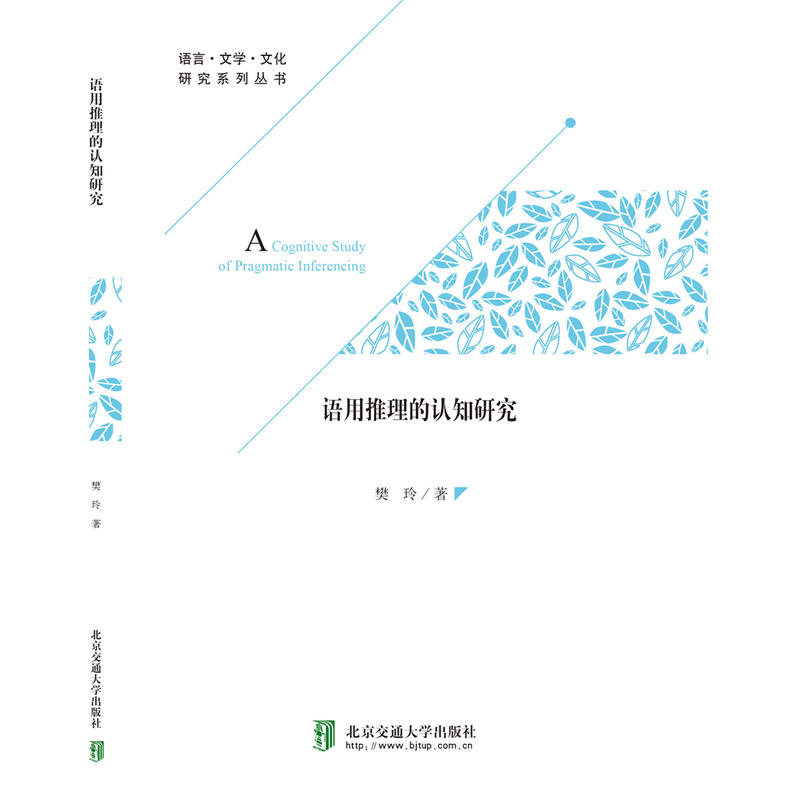- ISBN:9787512134072
- 装帧:一般胶版纸
- 册数:暂无
- 重量:暂无
- 开本:32开
- 页数:282
- 出版时间:2017-11-01
- 条形码:9787512134072 ; 978-7-5121-3407-2
本书特色
语用推理是推理的一类,是作为日常交际话语生成和理解之习见的一种手段。哲学、语用学、心理学以及认知语言学都把推理列为重点研究对象。从各自的研究视角,学者提出了十几种推理学说,例如,格赖斯和新格赖斯派推出的非自然意义的“含意”推理;斯珀伯和威尔逊的关联理论;认知语言学家从隐喻、转喻和概念整合角度所形成的推理理论。每种学说都有各自较完整的理论体系和模式。然而,语用推理是语言、社会、言语交际活动以及由各种有意识认知、无意识认知所组成的认知过程交互作用的结果。从单一的某种理论之视角很难概括其复杂的特性。本研究整合认知语言学和语用学的理论,从认知语言学视角研究语用推理的机制,旨在为促进认知语用学的发展作出一些贡献。
内容简介
《语用推理的认知研究/语言·文学·文化,研究系列丛书》融合了理性原则、概念整合理论和动态语境的认知语用研究,确立了以\"动态整合\"为核心的认知语用推理理论框架,分析了语用推理的认知运作机制。《语用推理的认知研究/语言·文学·文化,研究系列丛书》主要从三个方面探讨了交际过程中推理的动态整合过程,包括所意图、所言说和所隐含。《语用推理的认知研究/语言·文学·文化,研究系列丛书》运用\"动态整合推理\"模式将信息、社会和情感等意图的交际效果分为成功和失败两类,并对其原因作了认知分析。《语用推理的认知研究/语言·文学·文化,研究系列丛书》或可为今后继续研究语用推理提供一些理论思考。
目录
作者简介
樊玲,女,1966年生,北京化工大学副教授,北京师范大学博士毕业,研究方向为认知语用学与应用语言学。曾在《外语学界》《外语学刊》《外语教学》《北京化工大学学报》等学术刊物发表论文20余篇。已出版译著1本,主持编写教材5本,参与编写教材10余本。参加社会科学基金项目1项,主持和参与校内教改项目2项。
-

思想道德与法治(2021年版)
¥6.8¥18.0 -

中医基础理论
¥51.7¥59.0 -

落洼物语
¥9.4¥28.0 -

习近平新时代中国特色社会主义思想概论
¥18.2¥26.0 -

当代中国政府与政治(新编21世纪公共管理系列教材)
¥36.0¥48.0 -

毛泽东思想和中国特色社会主义理论体系概论(2021年版)
¥9.0¥25.0 -

艺术学概论
¥14.5¥37.4 -

粒子输运数值计算方法及其应用
¥42.8¥58.0 -

艺术学概论
¥60.2¥79.0 -

毛泽东思想和中国特色社会主义理论体系概论
¥10.5¥25.0 -

智能控制
¥40.2¥56.0 -

社会学概论(第二版)
¥34.0¥55.0 -

法理学(第二版)
¥18.0¥50.0 -

全国中医药行业高等教育“十三五”规划教材中医养生学/马烈光/十三五规划
¥36.8¥55.0 -

基于python的从学习编程到解决问题
¥35.4¥53.8 -

水利工程监理
¥28.3¥42.0 -

新编大学生军事理论与训练教程
¥13.7¥39.8 -

世界现代史(1900-2000)
¥31.4¥80.0 -

水电站
¥24.4¥36.0 -

公路工程机械化施工技术-(第二版)
¥18.6¥32.0













